Kitt Peak Observatory
Built in 1960, the rainwater harvesting system provides the observatory (its 12 to 15 residents, 60 daytime staff, 6 to 8 astronomers, and up to 300 visitors a day (average of 50) with its potable water. Average annual rainfall is 25 inches. The 6-acre catchment area collects water from roads, the two main parking lots, and the service area parking lot. All rooftops drain to adjacent roads or parking lots that direct their runoff to two basins sealed with concrete. These two basins combined hold about 600,000 gallons. Rainwater sits in the basins for a couple of days to allow solids to settle out to the bottom. Rainwater is then pumped from the basins to a 500-gallon flash mixer that adds soda ash and aluminum sulfate to the water to help settle out remaining solids in the water, once the water next moves to a flocculation tank. Then the rainwater is pumped through a sand filter, is chlorinated, and is then pumped to two 500,000-gallon steel storage tanks.
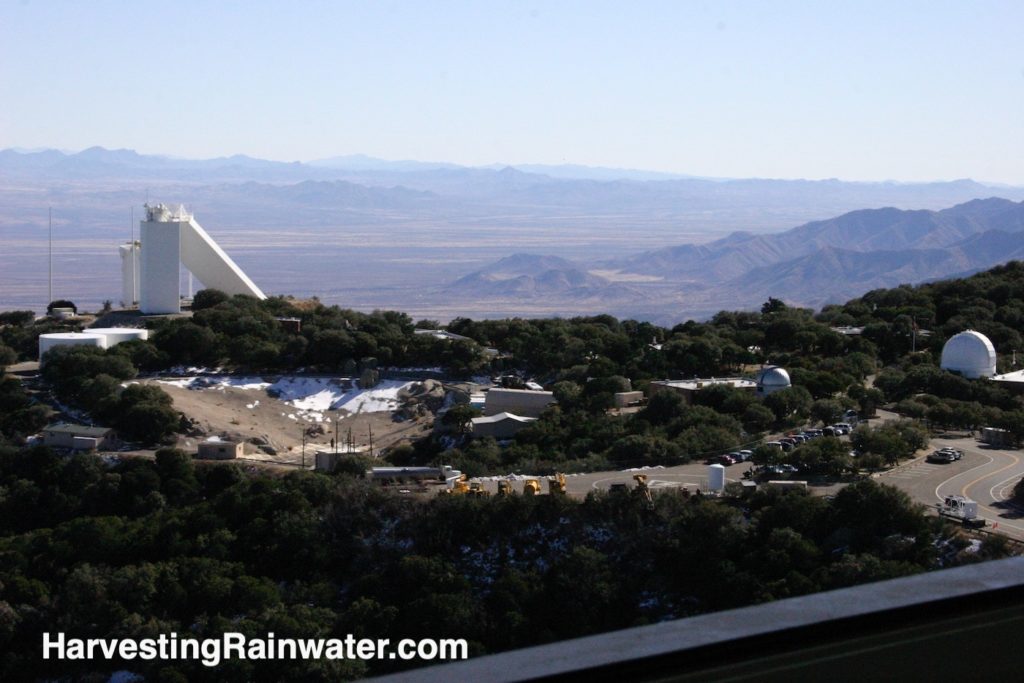
Photo: Brad Lancaster, 12-28-2007
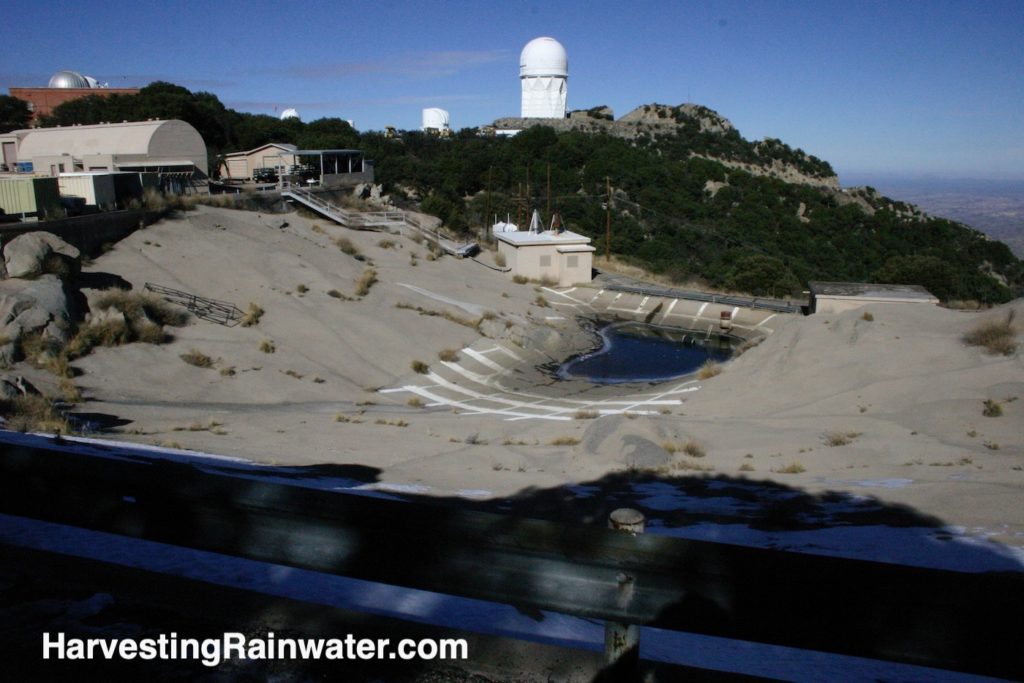
Photo: Brad Lancaster, 12-28-2007
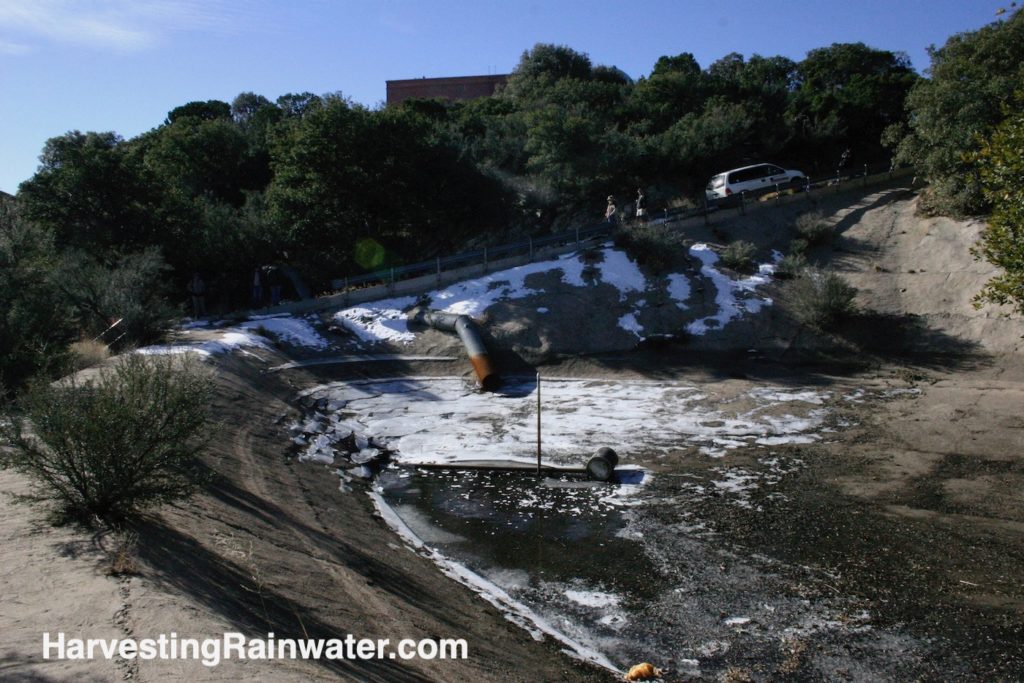
Photo: Brad Lancaster, 12-28-2007
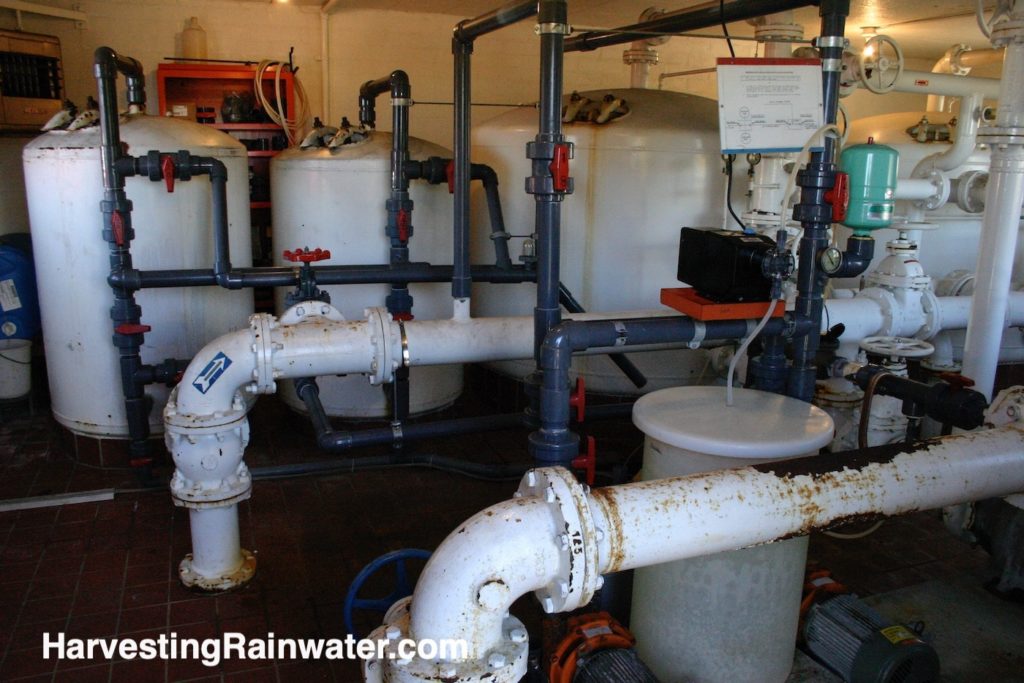
Photo: Brad Lancaster, 12-28-2007
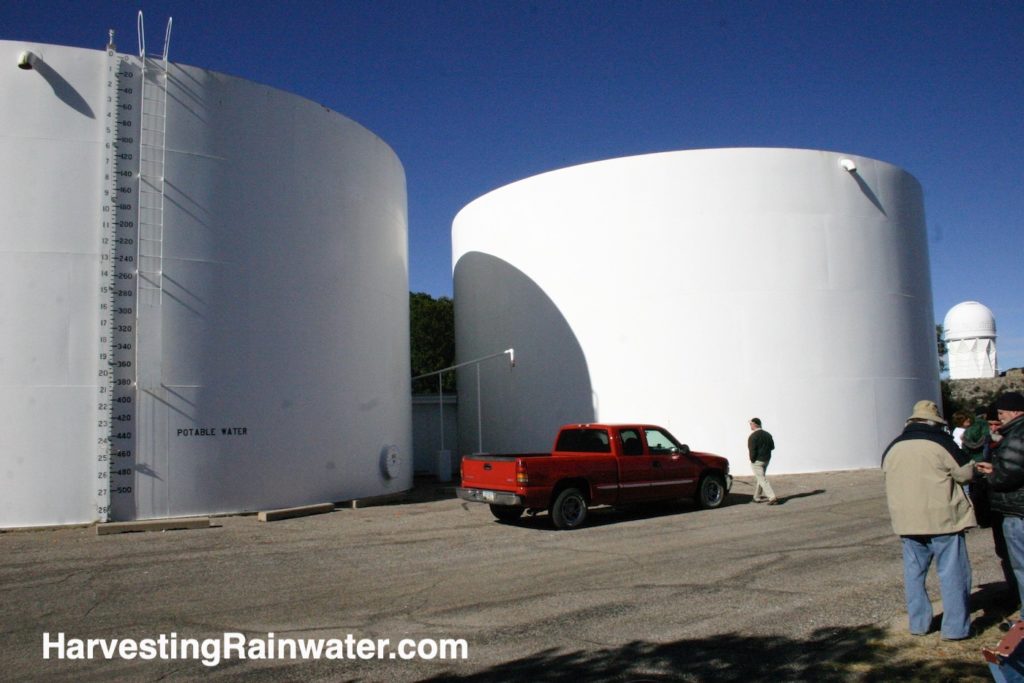
The tanked water supply is not allowed to drop below 200,000 gallons, so there is water on hand should a fire need to be fought.
Photo: Brad Lancaster, 12-28-2007
Back up supply
A lake 4 miles down the road from the observatory provides a 9 million-gallon back up supply of water. That can be pumped into a 6,000-gallon water truck, then hauled up to the main parking lot where the water is emptied into the upper catch basin.
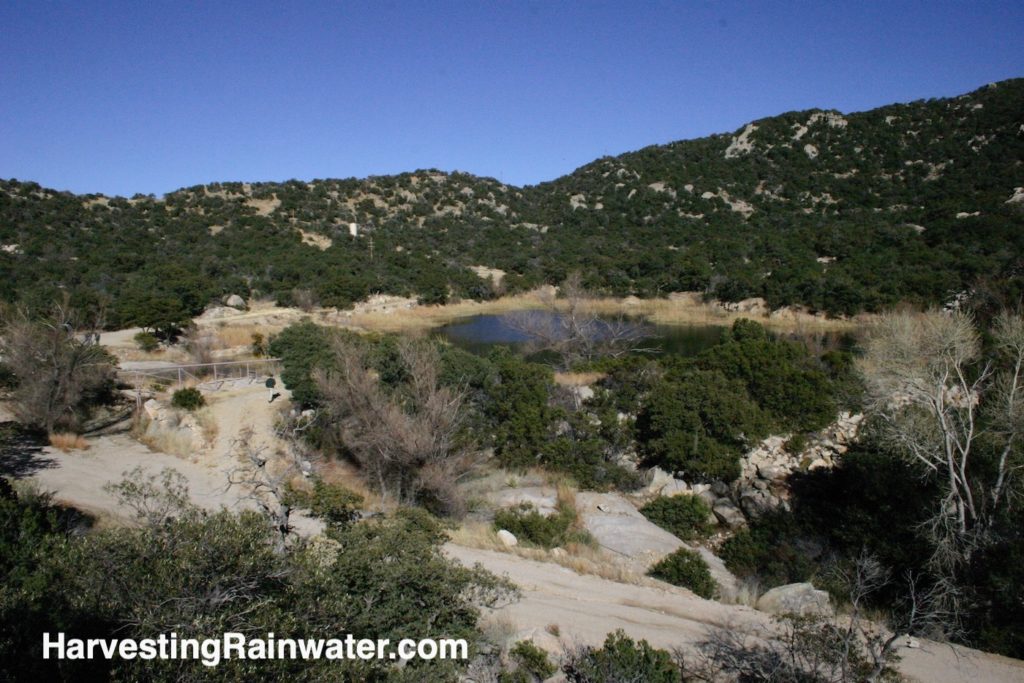
Photo: Brad Lancaster, 12-28-2007
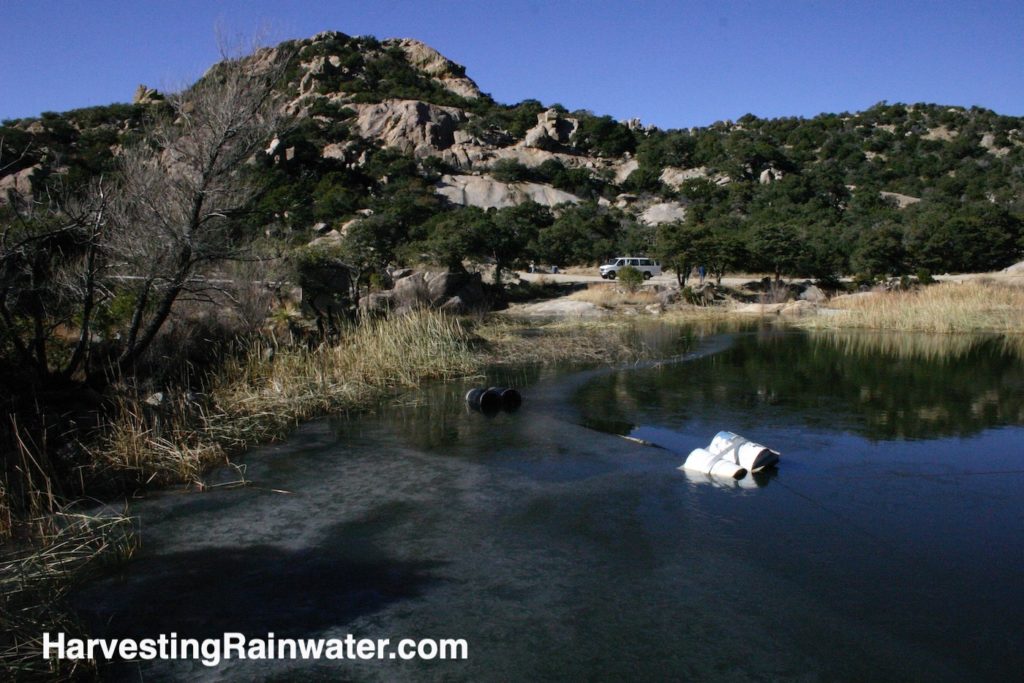
Photo: Brad Lancaster, 12-28-2007
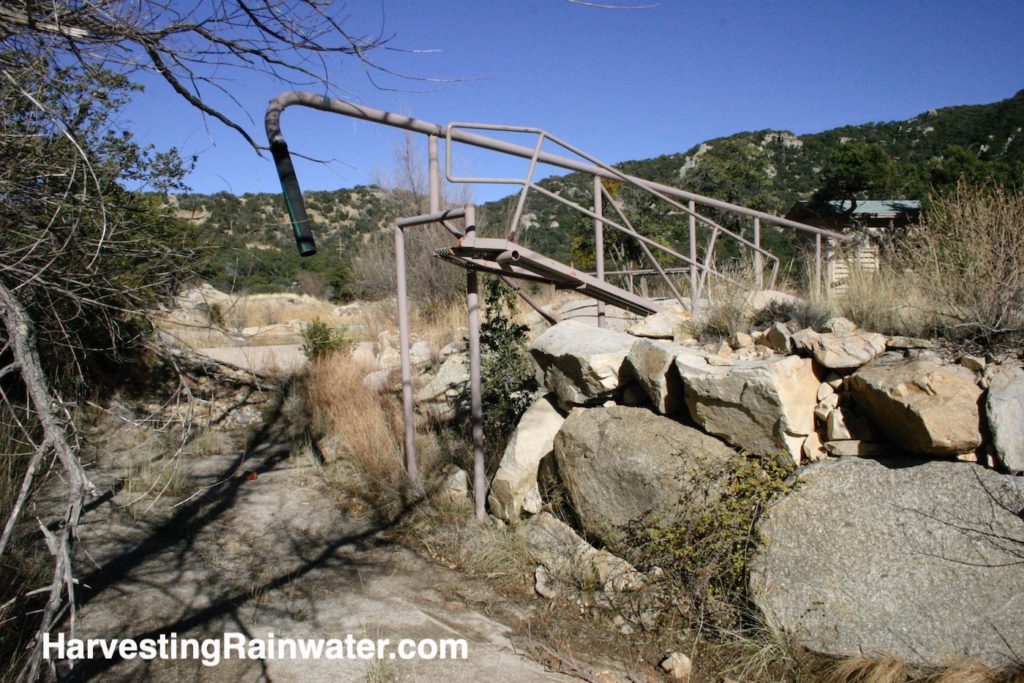
Photo: Brad Lancaster, 12-28-2007
Potential improvements
How could more of the potential of this place be realized?
Could anything be simplified in a way that would enhance efficiency, health, and life?
Here are a few thoughts…
• An alarm goes off if an excessive, continual flow of water is detected, as can happen if a toilet gets stuck and continually flushes. If not detected and fixed, such a leak could quickly deplete the system.
This makes me wonder, why have flush toilets at all?
Dry composting toilets would not consume, nor contaminate potable water.
• I found it odd that potentially low-quality parking lot runoff was a primary water source for the system.
Yes oil from cars, and dropped gasoline from the service area and its fuel pumps is filtered out of the potable water, but why introduce it to the potable water source in the first place?
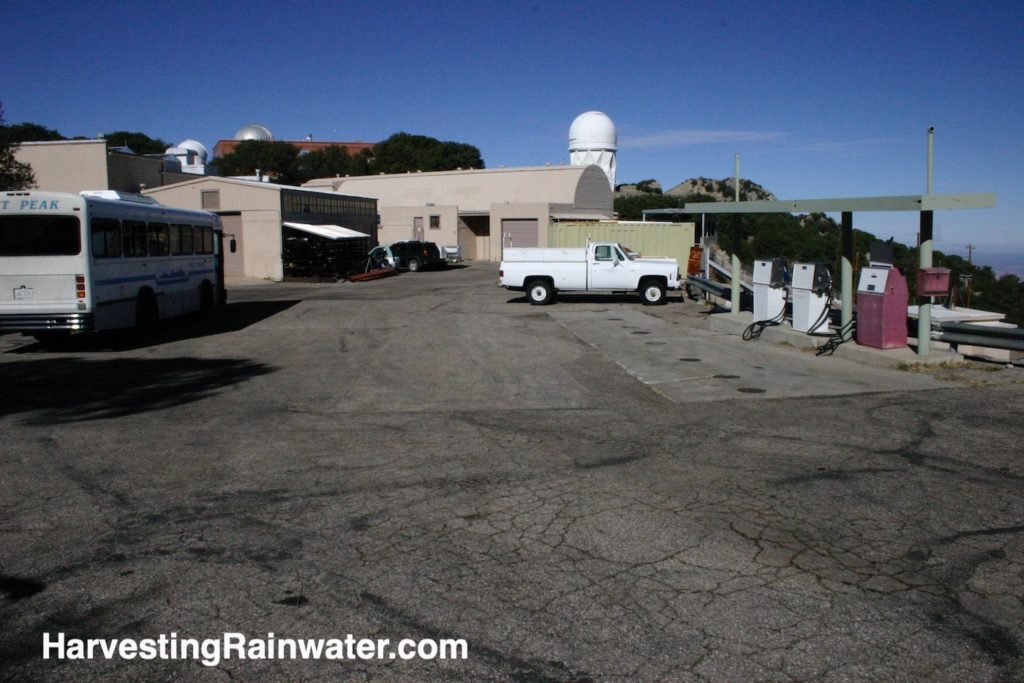
Photo: Brad Lancaster, 12-28-2007
• It seems to me that gravity could’ve been better utilized to not only catch rainwater, but also distribute it where needed, lessening the need for pumps and their energy consumption. Though this would entail a more distributed, rather than centralized system(s).
• I only saw active water harvesting (harvesting water in tanks), aside from stormwater captured in the lake. It seems to me passive water harvesting within the landscape would benefit the landscape, while also reducing fire threat by better hydrating soil and vegetation.
Where:
SR 86 (Ajo Way)/Junction 386 Tucson, AZ 85726
For information on tours and open hours see:
https://visitkittpeak.org/
(as of this writing the observatory was temporarily closed to the public due to covid).
This location is included in the following tours:
See the new, full-color, revised editions of Brad’s award-winning books
– available a deep discount, direct from Brad:

Volume 1

